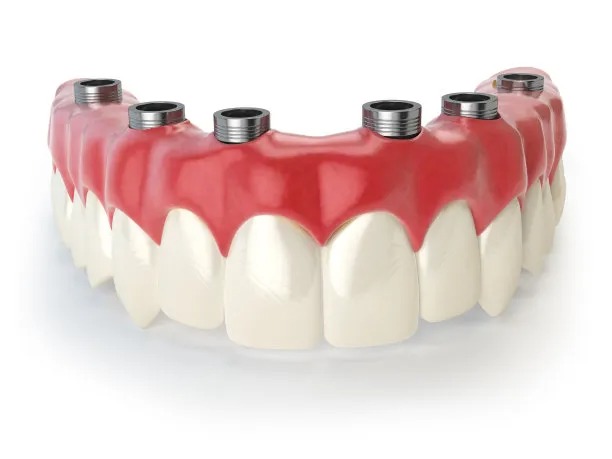Innovative Advancements in Dental Implant Treatment Improving Oral Health and Transforming Smiles for a Brighter Future
Summary: Innovative advancements in dental implant treatment have significantly changed the landscape of restorative dentistry, enhancing oral health outcomes and transforming smiles for individuals worldwide. This article delves into the latest technologies, materials, and procedures shaping dental implants, focusing on four pivotal aspects: 3D printing and personalized treatment, biocompatible materials, minimally invasive techniques, and digital planning and imaging. By examining these areas, we will explore how these innovations not only improve the functionality of dental implants but also elevate patient satisfaction, leading to a brighter future for dental health.
1. 3D Printing and Personalized Treatment

The emergence of 3D printing technology in dental implantology revolutionizes the way dental implants are designed and manufactured. Customization is now at the forefront, allowing practitioners to create tailored implants that fit the unique anatomical conditions of each patient. This personalized approach not only ensures better compatibility but also enhances the overall success rate of the implant procedures.
Moreover, 3D printing enables the rapid prototyping of dental models, making the planning stages more efficient. Dentists can now quickly prepare accurate models of a patients mouth, facilitating precise implant placements. By integrating advanced imaging techniques like cone beam computed tomography (CBCT), dental professionals can visualize the bone structure and overall mouth layout effectively, minimizing the risk of complications.
This evolution in personalized treatment leads to quicker recovery times and improved functionality for patients, creating a seamless experience from consultation to completion. Effectively, each personalized implant contributes to a more natural feel and look, boosting patient confidence in their restored smiles.
2. Biocompatible Materials Used in Implants
The choice of materials used in dental implants plays a crucial role in their success. Modern innovations have led to the development of advanced biocompatible materials that significantly enhance osseointegration—the process by which the implant fuses with the jawbone. Titanium, being highly biocompatible, has long been the standard, but recent advancements now also include zirconia and other composites, offering aesthetic and functional advantages.
These innovative materials not only improve the integration process but also reduce adverse reactions in patients. With a more extensive range of options available, dentists can make informed decisions that align with the specific needs of each patient. This is particularly important for patients who may experience allergies or sensitivities to traditional materials, as well as for those seeking a more aesthetically pleasing solution.
The development of antimicrobial coatings for dental implants is another significant advancement in material science. These coatings can help prevent infections post-surgery, further increasing the chances of successful outcomes and enhancing overall oral health.
3. Minimally Invasive Surgical Techniques
The trend towards minimally invasive surgical techniques in dental implant procedures is another groundbreaking advancement. Traditional methods often involved extensive surgical interventions, resulting in longer recovery times and increased discomfort for patients. However, new techniques, such as guided implant surgery, allow for precise placement of implants through smaller incisions.
These minimally invasive procedures not only reduce trauma to the surrounding tissues but also shorten the recovery period significantly. Most patients experience less pain and swelling post-operation, leading to a more positive overall experience. Additionally, because less bone structure is affected during the procedure, there is a reduced risk of complications, enhancing the long-term success rate of implants.
Furthermore, many dental clinics are adopting sedation techniques to ensure patient comfort during these minimally invasive procedures. The combination of these modern approaches decreases anxiety and fosters a more pleasant environment for patients, resulting in higher satisfaction levels.
4. Digital Planning and Imaging Technologies
Digital planning and imaging technologies are transforming dental implantology by streamlining the entire treatment process. Techniques such as digital impressions and advanced 3D imaging provide dentists with precise data to plan the surgery meticulously. This results in improved predictability and success rates for implants and allows for better communication between healthcare providers and patients.
The enhanced visualization capabilities offered by digital technologies help in making informed decisions about implant placement, further minimizing risks. Additionally, these tools facilitate better patient education, as visualization aids can help explain procedures and expectations clearly, leading to more informed patients who feel more involved in their dental care.
Furthermore, digital workflows enhance collaboration between dental specialists. Implants, crowns, and other restorative components can be precisely designed and produced in a streamlined manner, enabling cohesive treatment plans that benefit patients significantly. This digital integration ultimately ensures a superior clinical outcome and makes the overall procedure more efficient.
Summary:
The innovative advancements in dental implant treatments are reshaping oral health by enhancing patient experiences and outcomes. Through personalized implants, advanced materials, minimally invasive procedures, and digital technologies, the future of dental implants looks bright, providing patients with improved functionality and aesthetics. As these technologies continue to evolve, we can expect even greater advancements in dental care, making healthy, beautiful smiles more accessible than ever.
This article is compiled by Vickong Dental and the content is for reference only.



